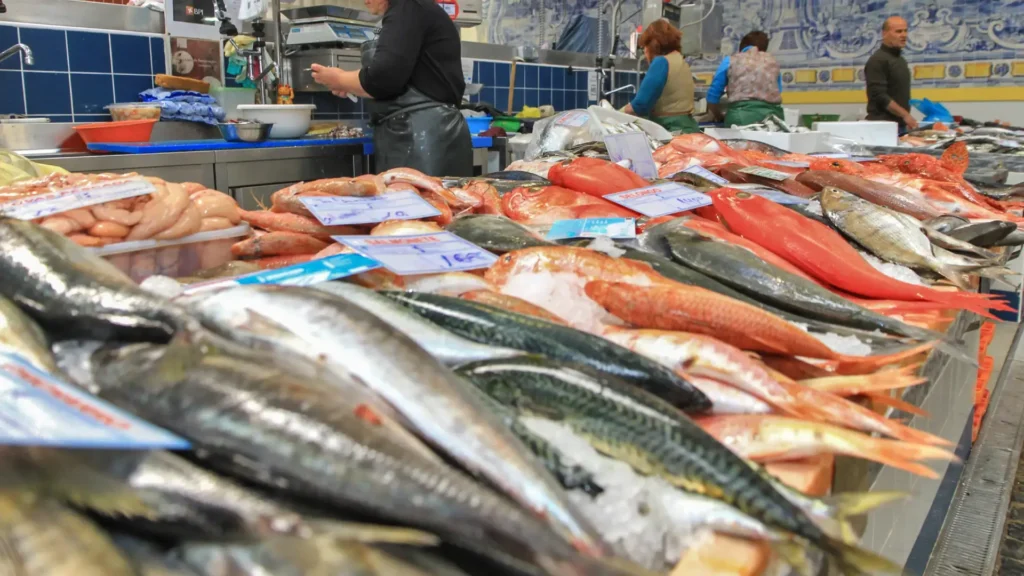You’ve likely never pondered the intricate voyage that the seafood market on your dinner plate has endured before arriving at your local market. It begins deep in the ocean, where skilled fishermen employ sustainable methods to ensure the future health of marine populations. Each fish, crab, or mollusk is then subject to stringent regulations aimed at preserving not only the species but also the environments they inhabit. However, the journey doesn’t end there. The process of getting these sea creatures from the docks to your table involves a meticulous chain of custody that raises numerous questions about quality, freshness, and ethical practices. You might wonder, what exactly happens during this critical transition and how does it affect the final product on your plate?
Catching and Harvesting Seafood
Fishermen deploy nets and lines daily, braving the ocean’s unpredictability to harvest the seafood market that graces your table. The methods they use, whether it’s trawling for shrimp, long-lining for tuna, or potting for crab, are honed from generations of knowledge yet adapted to modern techniques.
You mightn’t see their early morning starts under starlit skies or feel the salty breeze as they haul in their catch, but this is their everyday reality. Their tools are as varied as the species they seek. Trawlers drag nets across the ocean floor to capture everything from cod to squid, while long-liners set miles of hooks to attract pelagic fish like swordfish.
Meanwhile, crabbers place pots in strategic locales, hoping for a lucrative haul. Each method has its nuances, influenced by local ecosystems and target species. The catch is then sorted on deck—a flurry of activity where speed is crucial.
What isn’t immediately iced and packed for markets might be processed right on the vessel, ensuring freshness and reducing waste. This initial selection is critical, as it determines the quality and price of the seafood market that eventually reaches you, offering a direct link from the ocean’s bounty to your plate.
Regulations and Sustainability
As the seafood journey continues, understanding the role of regulations and sustainability practices becomes key to ensuring the health of marine ecosystems and the viability of fishing communities. You must recognize that without stringent policies, the risk of overfishing and habitat destruction rises, threatening the very foundation of marine life.
Globally, regulations such as catch limits, gear restrictions, and closed seasons are implemented to prevent the depletion of fish stocks. For instance, in the U.S., the Magnuson-Stevens Act mandates the use of science-based management plans to rebuild overfished stocks. It’s these types of laws that maintain the balance between economic interests and ecological necessity.
Moreover, sustainability isn’t just about compliance; it’s about adopting practices that go beyond the minimum. This includes measures like marine protected areas where no fishing is allowed, and eco-labeling that helps you choose seafood markets from better-managed sources. By supporting these initiatives, you’re not just buying fish; you’re investing in the future of our oceans.
It’s crucial you understand these dynamics. Your choices at the market have profound effects that ripple back through the supply chain, influencing how fisheries operate and ultimately shaping the health of our planet’s marine environments.
Distribution and Consumption
Once seafood has passed through the stringent checks of sustainability and regulation, it enters the complex network of distribution and consumption that brings it to your local market. This journey is a critical phase where time and quality are of the essence. Seafood market, particularly fresh catches, is highly perishable, necessitating a rapid transition from the ocean to your plate.
The process begins at the docks where seafood is quickly sorted, often on the same day it’s caught. It’s then transported under strict temperature controls to prevent spoilage. Distributors play a crucial role here, utilizing advanced logistics to ensure seafood stays chilled, preserving its freshness and nutritional value.
Upon arriving at markets, the seafood market undergoes another round of quality checks. You mightn’t see this, but it’s vital for ensuring that only the best products make it onto the display cases. Retailers then present it in a manner that emphasizes freshness and quality, often tagging it with information about its origin and the type of fishing methods used.
As a consumer, you’re the final link in this chain. Your choices can influence market demand, pushing for more sustainable practices and fresher options. Thus, your decisions at the market ripple back through this intricate network.
As you explore your local market, remember the intricate journey the seafood market undertakes from ocean to table. By choosing a sustainably sourced fish, you’re not just savoring freshness; you’re championing the health of our marine ecosystems.
Every purchase you make sends a powerful message about the future of fishing practices. So, let your meal choices reflect your commitment to both gastronomic excellence and environmental stewardship. Together, we can ensure a thriving, sustainable future for our oceans.
Learn more:
How to Make Informed Choices When Buying Seafood From Market Vendors

